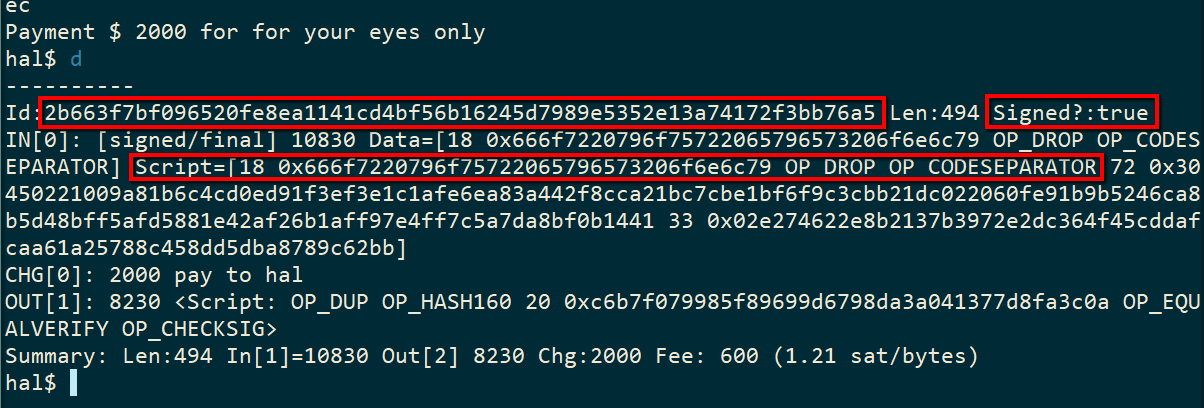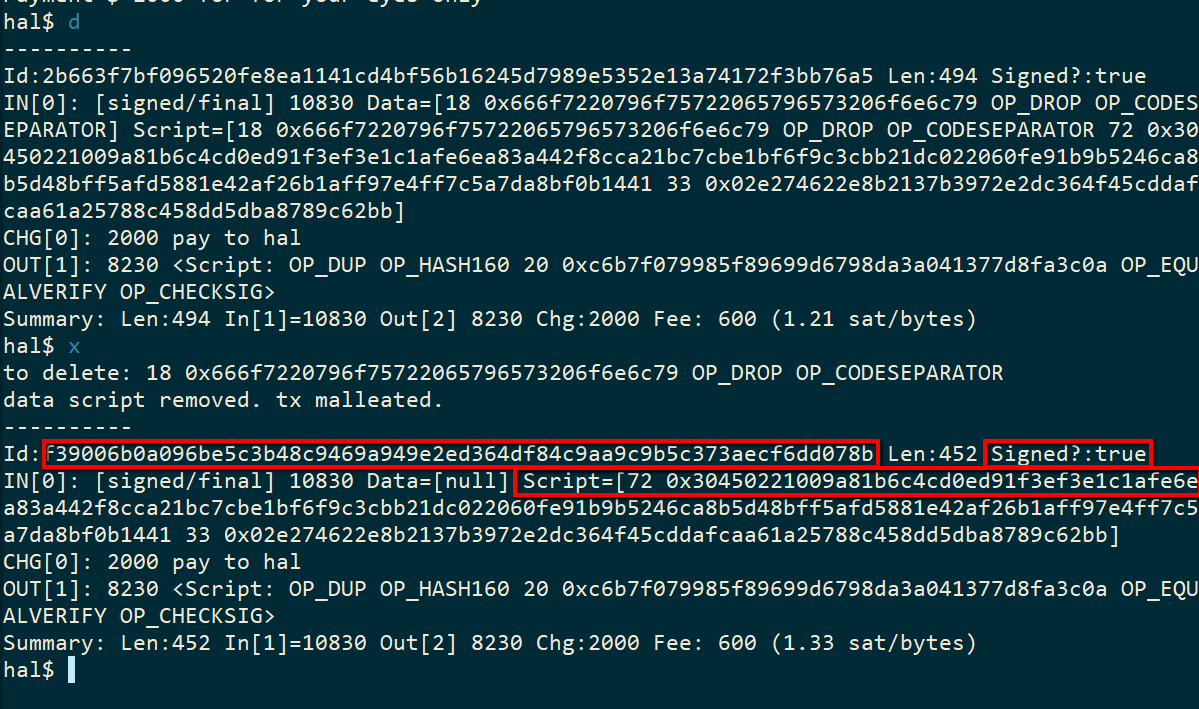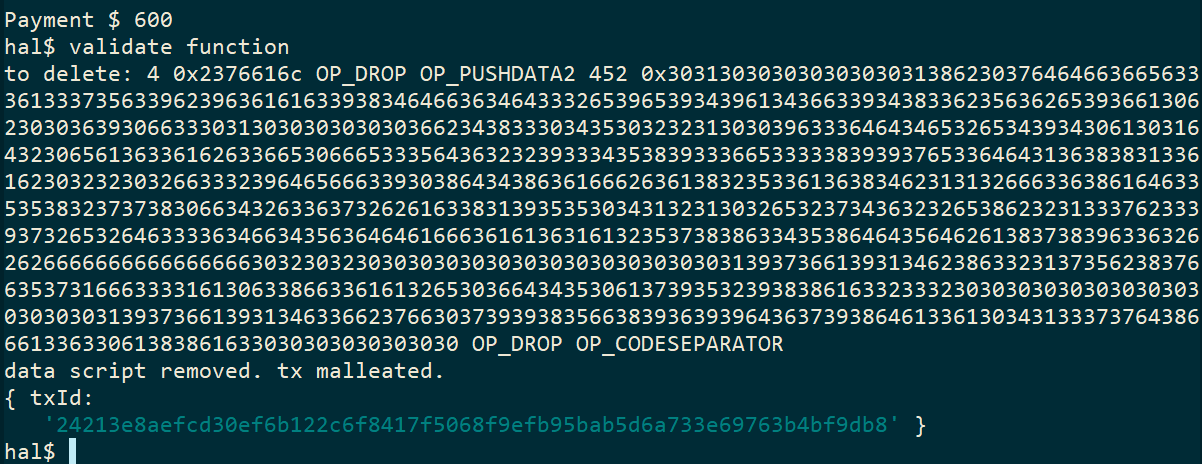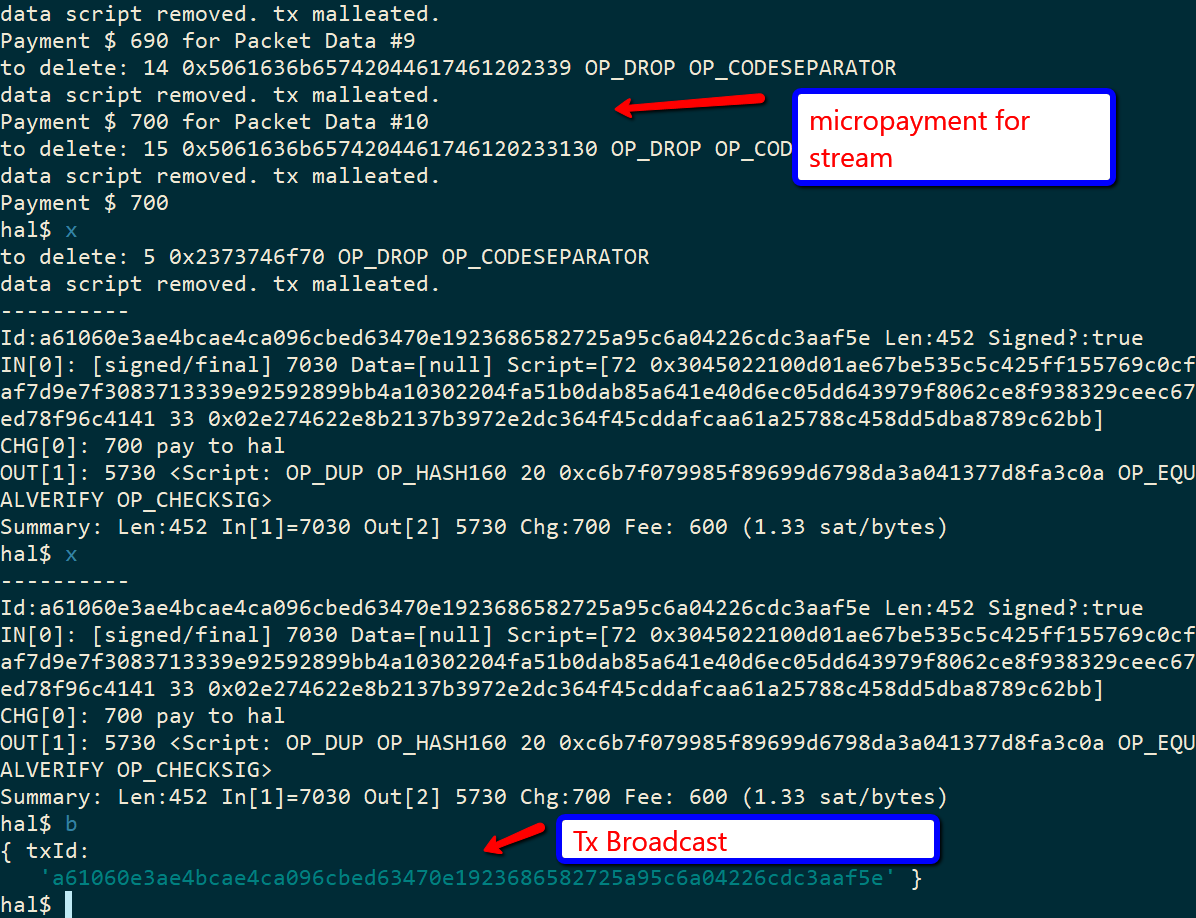Technical highlights
- Extend the reach of the Bitcoin protocol using P2P channels
- Use direct P2P channels built upon the dat project
- Execute script before broadcasting a transaction
- Malleate Tx by executing scriptSig
- Push serialized transactions onto stack by embedding them into other transactions
Bitcoin Ubiquity means...
- There is value in the protocol. Use the Bitcoin protocol.
- The Bitcoin protocol is data within script within a transaction.
- When a peer gives you script then execute the script.
- P2P extends the reach of the Bitcoin protocol.
- Every device communicates using the Bitcoin protocol.
For more background information on the project please refer to the docs/README.md file.
This project requires a modified bsv library. See https://github.com/dfoderick/bsv/tree/p2p.
This branch will be installed using npm install. See package.json file for details.
There is a wallet module that I copied from an existing project. I placed all copied code into /importedcode directory.
git clone https://github.com/dfoderick/ubiquity-hackathon
cd ubiquity-hackathon
npm install
node src/index
Note: If you have a 'git' error when installing then you might need to upgrade npm.
Once installed, app can be run with node src/index. Run from root of project so that the wallet knows how to find the existing wallets (satoshi and hal). The output is shown below.
Note: Run two instances to simulate 2 peers on network.
See Known Issues at bottom of this document for help.
$node src/index
You are Dave (d65efeab2a8e2557d1e61ec2c8ac27f6d2f4575d043a58f8afa835e64eaadf7f)
Listening to port: 3791
Subscribed to channel metanet
ubiquity$ help
Commands:
help [command...] Provides help for a given command.
exit Exits application.
peers show peers
iam <handle> changes your handle and wallet
@ <peer> connect direct p2p exchange with peer seq
send xpub send your wallet xpub
pay <amount> <fee> sends payment tx to peer. peer will broadcast
w show wallet utxos
debug debug. show payment transaction
execute Execute script on the payment transaction.
broadcast broadcast the transaction
fact <n> requests peer to calculate factorial
sign finalize and sign the transaction
stream starts a data stream pull with peer
stop stop the data stream
validatetx Validates Tx in mempool or a block
peers = will show current peers in your channel
iam = announces your handle and switches to the wallet with that name (i.e. wallet_satoshi.json)
@ <handle> = connect to peer with that handle (use a space after @)
w = show wallet utxos
d = debug. shows the current payment transaction
x = execute. execute the scriptSig if there are pushdata opcodes
s = sign. sign the current payment tx
b = broadcast the current payment tx. If it fails then look at the error meesage. There is help at end of this document.
Other commands that will be used in examples.
pay <amount> <fee> = sends payment tx to peer for that amount. You can consolidate utxo by paying peer. peer should x and b to broadcast.
val = pays peer to validate tx. use d to show results.
stream = start streaming. displays meter of running costs.
stop = stops the stream. peer that started the stream will need to execute, sign and broadcast.
After running node src/index you initialize a direct p2p connection using the iam and @ commands as shown below. Enter the commands by row. For exmple, enter iam satoshi in terminal 1 then iam hal in terminal 2. Then proceed to the next line. In other words, Satoshi needs to know that Hal is a peer before he can create a direct connection with the @ command.
Note: Run two instances to simulate 2 peers on network!
If you have any problems running the app contact me dfoderick@gmail.com or Telegram https://t.me/FullCycleMining
| Peer1 (Satoshi) | Peer2 (Hal) |
|---|---|
iam satoshi (prompt will change to $satoshi) |
iam hal (prompt will change to $hal) |
@ hal (prompt will change to satoshi<->hal) |
|
w (shows wallet balance) |
Peers will automatically exchange public keys when after the @ command is issued.
Make sure Satoshi has balance in wallet (see output of w command). If needed, fund the address with moneybutton (Send Money https://www.moneybutton.com/money). If needed, consolidate utxos using the pay command.
The following examples might be safe to run in order, without resetting the app. The app only keeps track of one payment transaction (shown with the d command)
This example is a bit facetious but it provides a good introduction on how to use the app and shows off how the peers are communicating. Note the use of scriptSig malleation.
How does this relate to onboarding? Satoshi was the original Bitcoin onboarder who sent 10 Bitcoin to Hal Finney. Gifting small payments is one way to onboard new users.
In the early days of mining a user could leave their computer hashing at night and wake up the next morning with some Bitcoin to spend. It was a simple method of onboarding new users using Proof of Work. We resurrect that idea below.
Under this proposal, Providers get paid by performing specialized calculations. They would simply leave their computer on and when someone uses it for a calculation then they get paid. It is not presented here but there would probably be a P2P marketplace between the user and the provider that would perform peer discovery (match peers).
Note the use of pushing a serialized transaction onto the stack in this example. It can be seen in the output of Hal's console.
Numerous means exist for providers to capture streams of revenue. Some ideas include ...
- Transaction validation
- Gaming server
- Smart contract autonomous agent
- Other specialty scientific computing
| Peer1 (Satoshi) | Peer2 (Hal) |
|---|---|
val |
Hal will get the serialized tx from the stack, validate the tx, broadcast the payment and send the result (true/false) to Satoshi |
d (to see result) |
w (to see payment in wallet) |
This example uses a micro payment channel for metering data usage. It does not actually show a video stream but the idea is that the data stream would include packets of video or some other data. The important thing is to see how Hal's balance goes up while Satoshis decreases. It could be used for people who agree to watch a video in exchange for BSV (advertising, for example). Earn money while browsing the internet, clicking on adds, filling out product surveys, live streaming of events. Anything with metered usage.
| Peer1 (Satoshi) | Peer2 (Hal) |
|---|---|
stream |
Displays will show data stream and payment metering |
stop |
x (execute script) |
b (broadcast) |
- Bug Fixed. Hal is supposed to be able to broadcast the last tx since the
stopcommand was signed by Satoshi. If Hal cannot broadcast then Satoshi can execute, sign and broadcast as a work around.
- Dust can build up rapidly. You have to clean up dust. Options: Rename wallet.json to wallet_backup.
iamcommand will create a new wallet. Use pay command to send dust to peer. Use<amount>and<fee>to control the size of the transaction. If the transaction size is too big (JSON errors) then execute and broadcast locally. - dat project has a limit on the size of a message. If you get json serialization errors you can try the same command again. If it keeps happening then you need to reduce the size of the transaction.
- dat can sometimes lose the connection. Restart the app.
- Look carefully at broadcast errors. Often it is because you need to run
xbeforeb.
The following lists some common error message and how to fix or get around them. Most of these are tx broadcast errors.
vin-empty
means there is no input to tx. usually will happen when a message envelope tx
is getting broadcast instead of the embedded serialized tx
16: mandatory-script-verify-flag-failed (Signature must be zero for failed CHECK(MULTI)SIG operation). Code:-26 Tx has been malleated too many times (some unknown bug). Sign the tx again fix the signature.
Dust amount detected in one output
Means one of the outputs is 0
Change address is missing
undefined - For more information please see: https://bsv.io/api/lib/transaction#serialization-checks
Means something is seriously wrong with tx. Negative outputs or fees.
Provided public keys don't hash to the provided output
For multisig means both pub keys are not available
Invalid state: Not all utxo information is available to sign the transaction
message 64: scriptsig-not-pushonly. Code:-26
findAndDelete needs to be run on the inputs
Transaction has no inputs to add Command!
means pushdata could not be added to tx because it doesnt have any inputs yet



